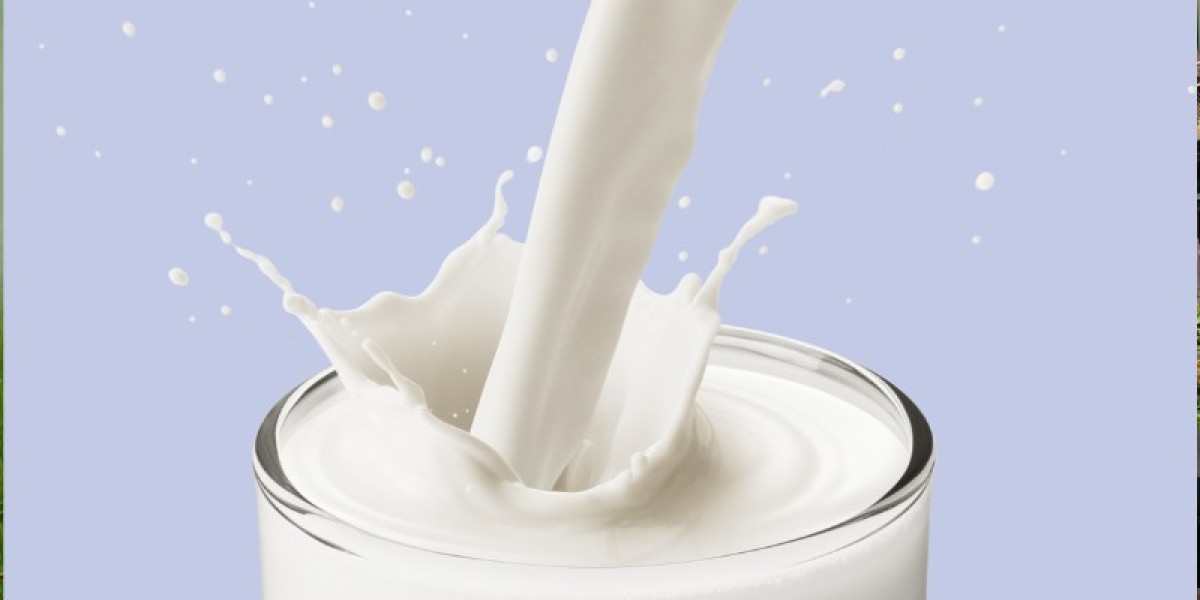The Australian milk market, valued at AUD 9.84 billion in 2024, is witnessing significant growth. This growth is attributed to high-quality milk production driven by advanced farming methods, strict regulations, and increasing demand for dairy products. The market is expected to expand at a compound annual growth rate (CAGR) of 7.20% from 2025 to 2034, potentially reaching AUD 19.72 billion by 2034. Innovations in dairy farming, sustainability practices, and the rising popularity of dairy-based products are key factors contributing to the market’s expansion.
In this article, we will explore the drivers behind the growth of the Australian milk market, emerging trends, and innovations in the dairy industry. We will also examine the increasing consumer demand for premium dairy products and how sustainability is reshaping the milk production process.
The Australian Milk Market: Overview
Australia has long been known for its high-quality milk production. The Australian milk market is an essential segment of the broader dairy industry, which is integral to the country’s agricultural economy. Australia’s milk production benefits from state-of-the-art farming practices and strict regulations that ensure the highest standards of hygiene, quality, and sustainability.
In 2024, the milk market in Australia is valued at AUD 9.84 billion. With dairy consumption on the rise and a steady increase in production efficiency, the market is set for robust growth. This growth is driven by the increasing demand for high-quality, nutritious milk, as well as the expanding global market for Australian dairy products.
Key Segments of the Milk Market
The Australian milk market can be divided into several key segments:
Fresh Milk: This is the largest segment of the Australian milk market. Fresh milk consumption continues to be a staple in the Australian diet, with the demand for organic and premium varieties growing rapidly.
Milk Powder: The demand for milk powder, particularly in export markets like China and Southeast Asia, has seen significant growth. Powdered milk is commonly used in the production of infant formula, baking, and other dairy-based products.
Flavored Milk: Flavored milk products, such as chocolate milk and strawberry milk, are also becoming increasingly popular in the Australian market, particularly among younger demographics.
Dairy Alternatives: While dairy remains dominant in the Australian market, the rise of plant-based milk alternatives (e.g., almond, oat, soy) is gradually gaining market share due to changing consumer preferences.
Key Drivers of Growth in the Australian Milk Market
Several factors are fueling the growth of the Australian milk market. These include changes in consumer preferences, increased demand for high-quality milk, and innovations in farming practices. Let’s take a deeper look at these drivers:
1. High-Quality Milk Production
Australia is renowned for producing high-quality milk, with rigorous regulations and quality control standards in place to ensure that milk is safe, fresh, and nutritious. The country’s strict animal welfare regulations, environmental sustainability practices, and advanced farming methods contribute to the superior quality of its milk.
Australian dairy farmers use modern farming technologies, including automated milking systems, to improve productivity and ensure the quality of milk produced. These advancements not only increase output but also improve milk consistency, which is crucial for meeting the high standards of domestic and international consumers.
2. Rising Demand for Dairy Products
Dairy products, including milk, are essential components of the Australian diet. The increasing demand for milk is driven by the rising awareness of the health benefits associated with dairy consumption. Milk is a rich source of calcium, protein, and other essential nutrients, and as the population becomes more health-conscious, the demand for milk and other dairy products is expected to continue growing.
In addition, milk plays a crucial role in the production of other popular dairy products, such as cheese, butter, yogurt, and ice cream. The increasing consumption of these products, both domestically and internationally, is helping drive growth in the Australian milk market.
3. Export Opportunities
Australia is a major exporter of dairy products, and the demand for Australian milk and milk-based products continues to grow in international markets, particularly in Asia. Countries like China, Japan, and Indonesia are increasingly importing Australian milk, driven by rising disposable incomes, changing diets, and greater awareness of the quality of Australian dairy products.
Milk powder, in particular, has seen a significant increase in export demand, especially for use in infant formula production. Australian dairy exports contribute significantly to the overall growth of the milk market, and as global demand for dairy products rises, Australia is well-positioned to capitalize on this opportunity.
4. Technological Innovations in Dairy Farming
Technological advancements in the dairy industry are improving milk production efficiency and sustainability. New technologies in the form of automated milking machines, AI-driven farm management systems, and precision farming techniques are helping dairy farmers increase productivity while reducing environmental impact.
For instance, the use of sensors and IoT devices in dairy farming allows farmers to monitor the health and well-being of cows in real-time, optimizing milk production and minimizing waste. Additionally, advancements in breeding techniques are helping improve herd genetics, resulting in better milk yields and improved animal health.
5. Sustainable and Ethical Practices
Sustainability is becoming an increasingly important consideration in the Australian milk market. With a growing focus on environmental issues, consumers are increasingly seeking out products that are produced using ethical and sustainable practices.
In response, Australian dairy farmers are adopting more sustainable practices such as water conservation, renewable energy use, and waste reduction. Many dairy farms are also incorporating animal welfare initiatives, ensuring that cows are treated humanely throughout their lifecycle. These efforts align with consumer expectations and are driving demand for sustainably-produced milk and dairy products.
6. Shift Towards Premium Dairy Products
The Australian milk market is experiencing a shift towards premium and specialty dairy products. Consumers are increasingly seeking out organic milk, grass-fed milk, and milk from free-range cows, as well as milk with added health benefits, such as fortified milk with additional vitamins and minerals.
Premium products, which are often marketed as more natural, environmentally friendly, and nutritionally superior, are driving growth in the milk market. This trend is reflective of broader consumer preferences for higher-quality, ethically-produced food products.
Emerging Trends in the Australian Milk Market
Several emerging trends are shaping the future of the Australian milk market:
1. Plant-Based Milk Alternatives
While dairy milk remains the dominant choice in Australia, plant-based milk alternatives such as almond, soy, oat, and coconut milk are increasingly gaining market share. As more Australians opt for plant-based diets or lactose-free options, the demand for dairy alternatives is expected to continue growing.
However, despite the rise of plant-based milk, dairy milk is still the dominant product in the market, with many consumers preferring the taste and nutritional benefits of traditional milk.
2. Health and Wellness Trends
The growing focus on health and wellness is influencing the milk market, with consumers looking for products that offer nutritional benefits. Low-fat, high-protein, and lactose-free milk options are gaining popularity among health-conscious consumers. Additionally, innovations in fortified milk, such as milk enriched with omega-3 fatty acids, probiotics, or extra calcium, are attracting attention in the marketplace.
3. Direct-to-Consumer Models
The rise of e-commerce has led to a surge in direct-to-consumer (DTC) models in the Australian milk market. Dairy companies are increasingly offering subscription-based services, allowing consumers to have fresh milk delivered directly to their homes. This trend is gaining popularity as consumers prioritize convenience, and it provides dairy companies with an opportunity to build stronger relationships with customers.
4. Digital and Blockchain Innovations
Digital technologies and blockchain are making waves in the dairy industry, enhancing transparency and traceability in the milk supply chain. Blockchain technology, for example, is being used to track the origin of milk, ensuring its quality and authenticity. This trend aligns with the growing demand for food safety and transparency, as consumers seek assurance about the provenance and quality of the products they consume.
Market Forecast: 2025-2034
The Australian milk market is projected to grow at a CAGR of 7.20% from 2025 to 2034, reaching an estimated value of AUD 19.72 billion by 2034. This growth will be fueled by the increasing demand for high-quality milk, the expansion of dairy exports, technological innovations in farming, and a growing shift toward sustainable and premium products.


